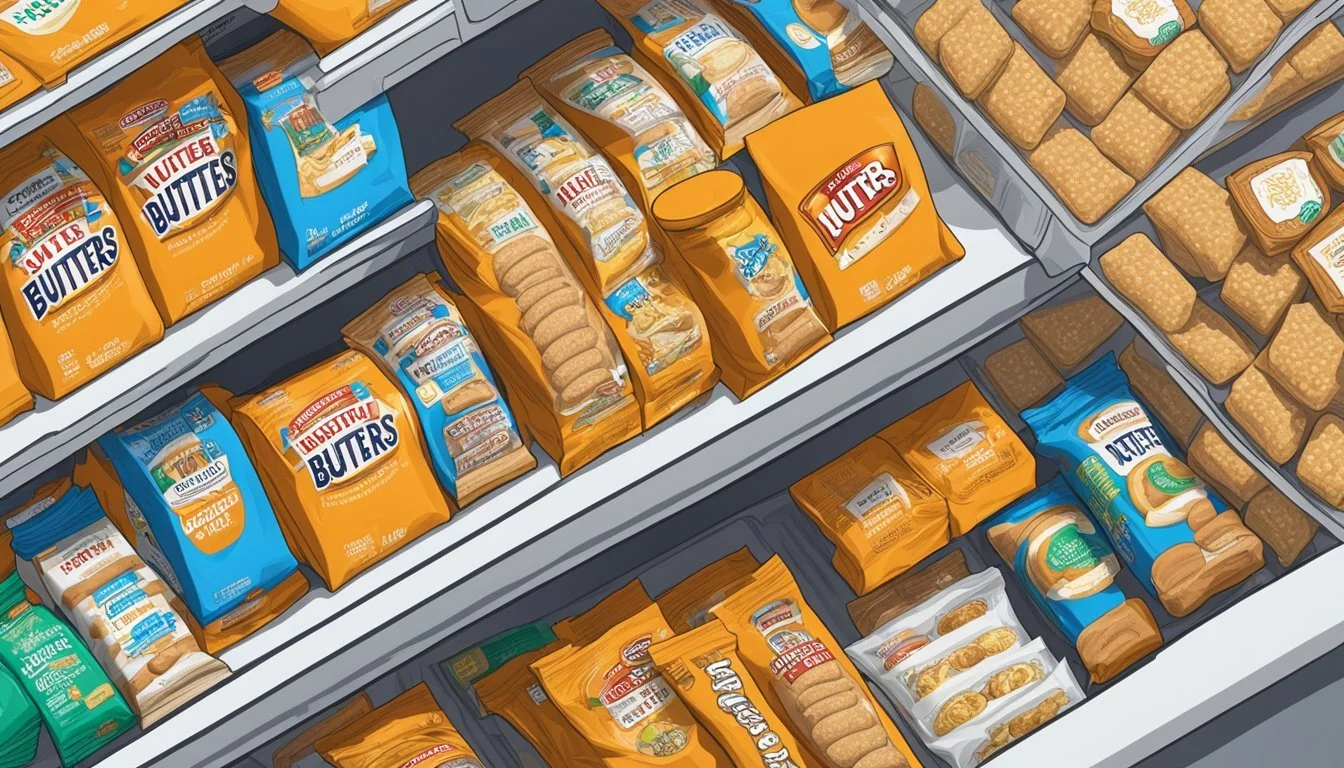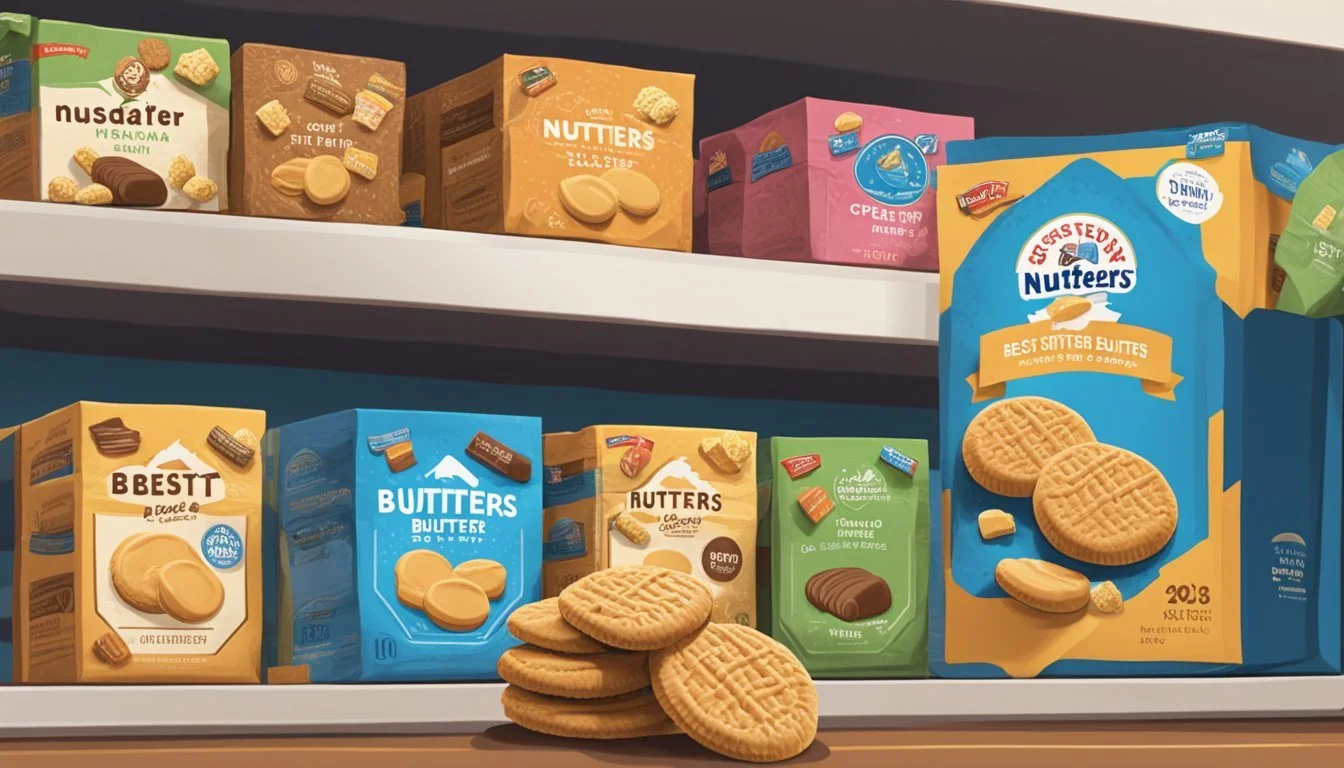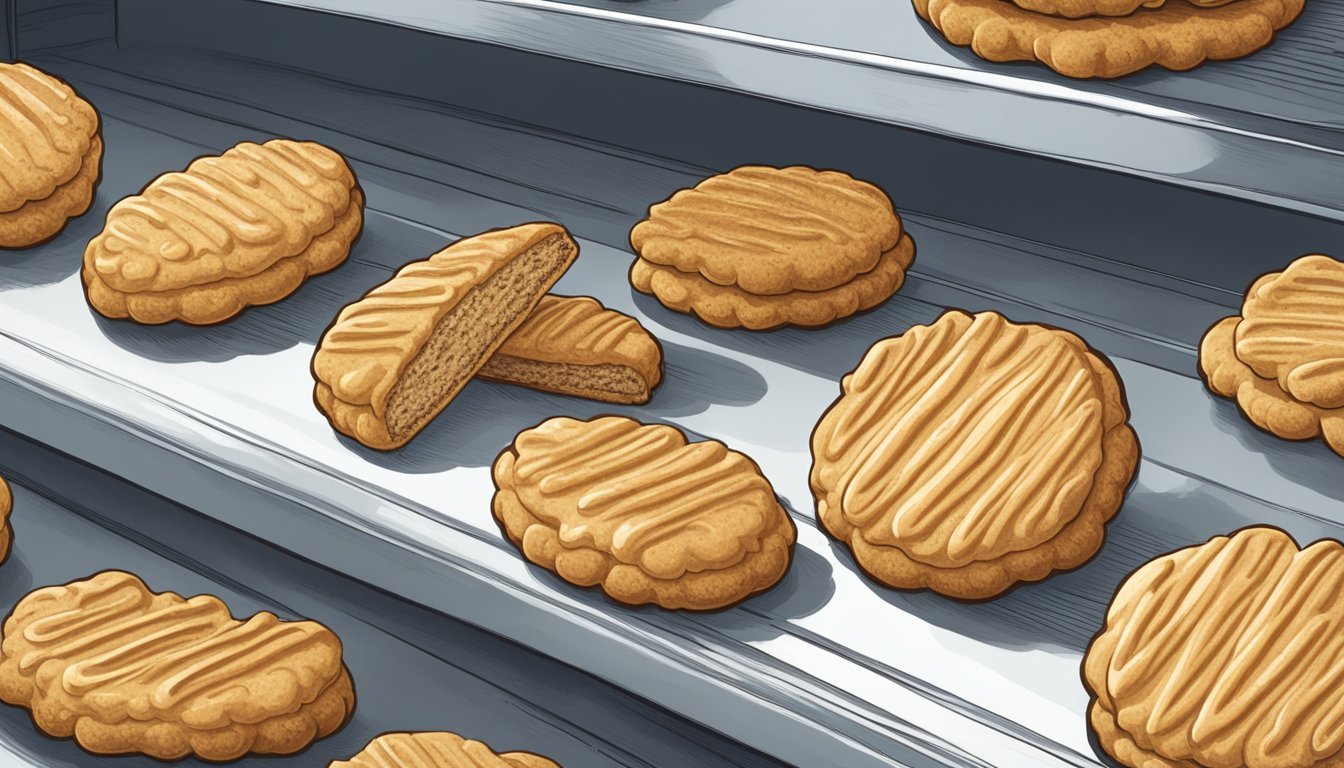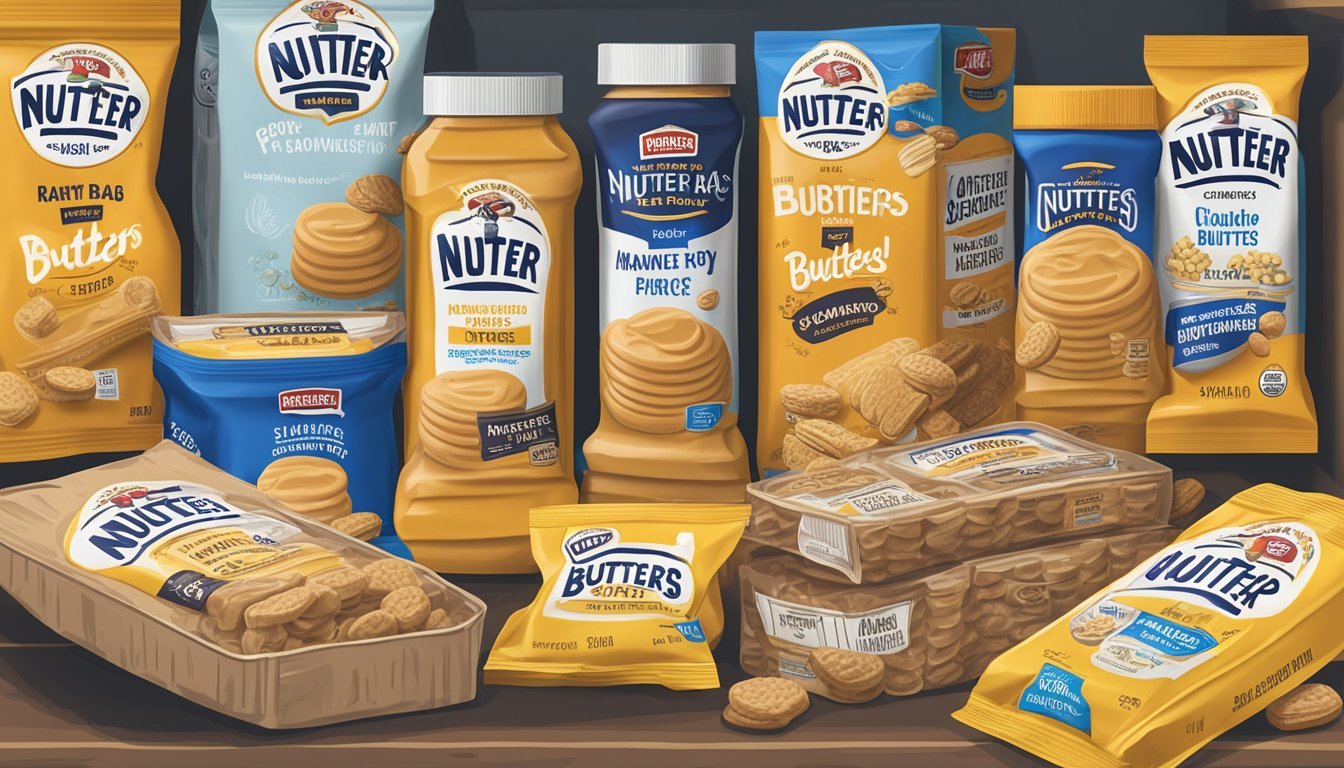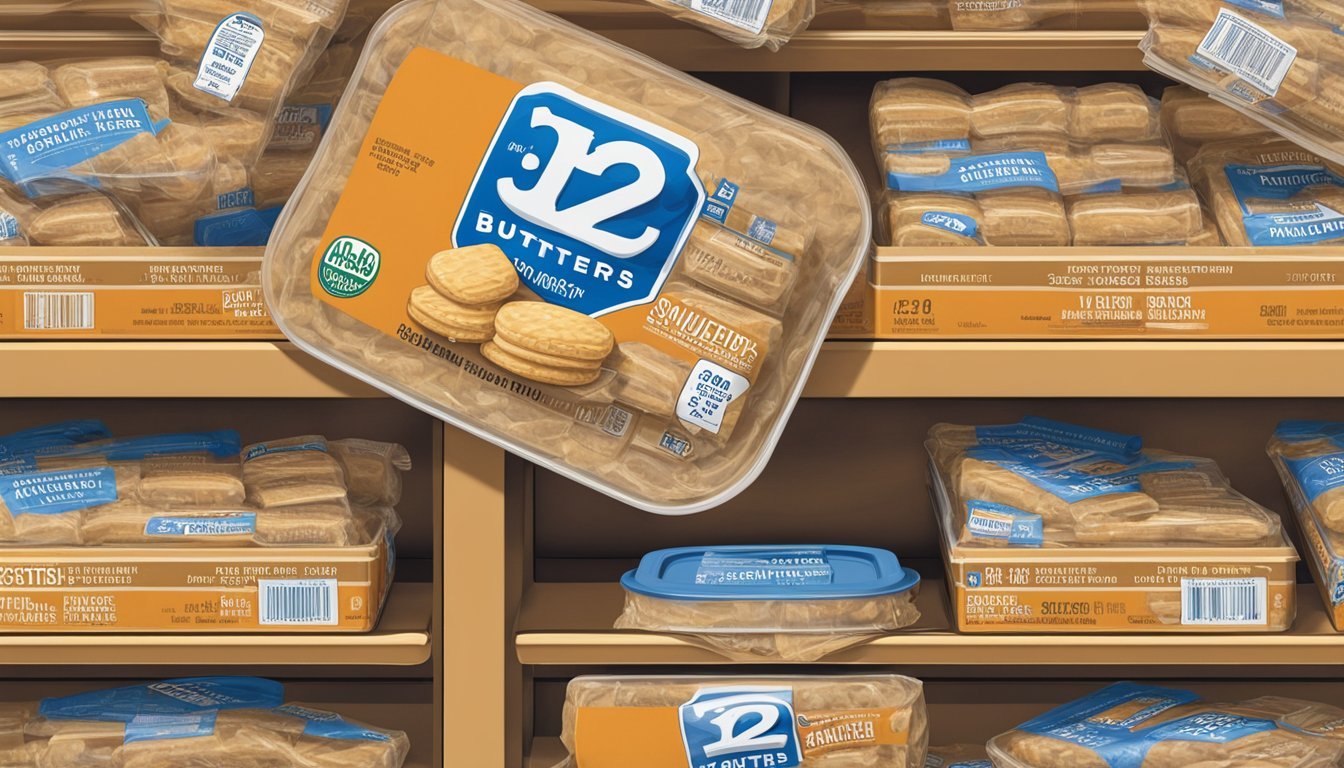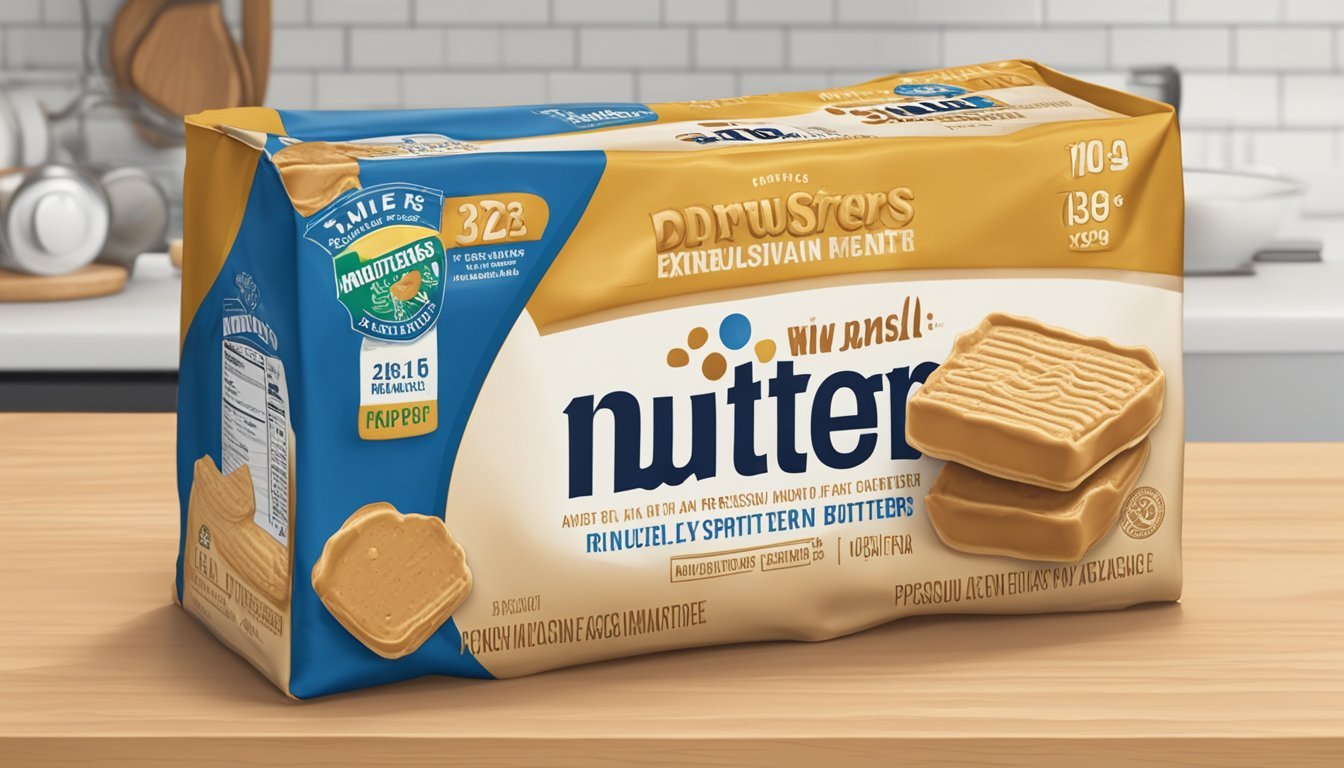How Long Do Nutter Butters Last?
Shelf Life and Storage Tips
When exploring the shelf life of Nutter Butter cookies, one must consider the packaging and storage conditions. These popular peanut butter sandwich cookies, containing a sweet filling between two crispy peanut-shaped cookies, have been a staple in the snack aisle since their inception. Typically, Nutter Butter cookies remain fresh for a period reflecting their best-by date, which is an indication provided by manufacturers to suggest the timeframe within which the product is considered to be at its optimal quality.
After the best-by date, while Nutter Butters may not be at their peak quality, they generally remain safe to consume for a while if they have been stored properly. To ensure the longevity of the cookies, they should be kept in an airtight container to protect them from moisture and other contaminants that could hasten staleness or spoilage. Properly stored, Nutter Butters maintain their quality and are enjoyable well beyond the date printed on the package, provided there is no sign of spoilage or off-odors.
Understanding Nutter Butters
Introduced by Nabisco in 1969, Nutter Butters have an established history and a variety of ingredients that provide certain nutritional values.
History and Brand
Nabisco, the brand responsible for iconic cookies like Oreo, introduced Nutter Butter cookies to the American public in 1969. These peanut butter-shaped sandwich cookies soon became a household name, on par with their sibling, Oreo. Mondelez International now owns Nabisco and by extension, the Nutter Butter brand.
Ingredients and Varieties
The classic Nutter Butter cookie consists primarily of a peanut butter filling sandwiched between two peanut-shaped, peanut-flavored cookie layers. Essential ingredients include:
Wheat flour
Sugar
Peanut butter
Shortening
There are several varieties, such as:
Original
Creme Patties
Fudge Covered
These offer consumers a range of flavors and textures.
Nutritional Value
Discussing the nutritional value of Nutter Butters, these cookies are not considered a health food. They contain:
Protein: A modest amount, due to the presence of peanut butter.
Iron, Calcium, Vitamin E, Magnesium: Present in trace amounts.
However, it is important to note that Nutter Butters are not labeled as vegan, as they may contain milk or eggs. Consumers looking for a vegan snack should verify the ingredients for specific varieties.
Storage Fundamentals
When storing Nutter Butters, understanding how different storage methods affect their freshness and longevity is critical.
Optimal Storage Conditions
To maintain the quality of Nutter Butters, one must store them in conditions that limit exposure to moisture and temperature fluctuations. Ideally, Nutter Butters should be kept at room temperature, which typically ranges between 68°F (20°C) and 72°F (22°C). These conditions help to preserve the texture and flavor of the cookies.
Refrigeration vs. Pantry
Storing Nutter Butters in the pantry is suitable, as the cooler temperatures of a fridge can introduce unwanted moisture which may affect the crispness of the cookies. Should one choose to refrigerate, it's essential to ensure the container is completely airtight to prevent the cookies from becoming soft or soggy.
Airtight Containers
Using an airtight container is a key step in preserving the quality of Nutter Butters. The container’s lid should seal properly to prevent air and moisture from entering. Containers must be dry and clean before use to avoid introducing moisture that could lead to staleness or potential mold growth.
Shelf Life and Freshness
The shelf life of Nutter Butters is influenced by storage conditions and whether the packaging is opened or unopened. Properly assessing shelf life and recognizing spoilage signs are crucial to consuming the product while it remains fresh.
Determining Shelf Life
Nutter Butters, like many packaged cookies, have a best by date which is an indicator of how long they will retain peak quality. Unopened, they typically remain fresh for several months. Once opened, these cookies are best consumed within a week or two for optimal taste and texture. The FDA does not provide specific guidelines for the shelf life of cookies, but recommends following the expiration dates and proper storage instructions.
Signs of Spoilage
Signs that Nutter Butters have gone bad include:
Off smell: A noticeable change in odor implies spoilage.
Taste alteration: Any stale or off flavors signify the product is no longer fresh.
Mold presence: Visible mold growth indicates the product should not be consumed.
One should avoid eating the cookies if any of these signs are present, as they can lead to foodborne illness.
Expiration Date
While not always an exact indicator of safety, the expiration date on Nutter Butters packaging is a useful guideline provided by manufacturers. After this date, the freshness of the product can decline, even if it does not necessarily mean the product is harmful. As per USDA recommendations, consumers should consider the expiration date, but also examine the product for signs of spoilage.
Nut Butter Preservation
Proper storage and an understanding of preservative methods are crucial for prolonging the shelf life of nut butters. This involves distinguishing between natural and commercially produced varieties, each with differing preservative needs.
Natural vs. Commercial
Natural nut butters usually have minimal ingredients, often consisting only of ground nuts and perhaps salt. They lack stabilizers and thus may separate, with oil rising to the top. It is generally recommended to refrigerate natural nut butters after opening to prevent the oil from going rancid. In the fridge, natural nut butters can last between three and six months.
In contrast, commercial nut butters often include additives that help prevent separation and extend shelf life. They may also use roasting methods and packaging that reduce exposure to air, allowing them to last longer at room temperature. Once opened, however, refrigeration can still benefit their longevity.
Preservatives and Additives
Commercial nut butters frequently contain preservatives and additives such as stabilizers to maintain texture and freshness. Ingredients like hydrogenated oils or palm oil can be found in these products to prevent the natural oil separation that occurs in natural nut butters. These ingredients can extend the shelf life of a peanut butter jar to over a year at room temperature unopened. However, once opened, it's advised to consume the product within a few months for best quality, regardless of preservatives.
For nut butter enthusiasts who prefer natural varieties without these additives, it's imperative to keep their spread in a cool environment. Refrigeration not only protects the flavor and consistency but also guards against spoilage due to rancidity.
Handling and Usage
Proper handling and usage of nut butters are crucial for maintaining their quality and ensuring safety. Adhering to recommended practices can prevent foodborne illness and preserve the nut butter's best characteristics for enjoyment.
Safe Handling Practices
When handling nut butters, one should always use clean utensils to avoid cross-contamination. Spoons or knives for serving should be clean before dipping into the jar. For those with a peanut allergy, using separate utensils for different nut butters is essential to avoid triggering an allergic reaction.
Use clean utensils: Always serve nut butters with utensils that are free from contaminants.
Storage: Immediately seal and refrigerate after opening to prolong freshness.
Cross-contamination: Be mindful to prevent cross-contact if someone has food allergies.
Serving Suggestions
Nut butters can be spread on a slice of toast with a knife for a quick snack or meal. They can also be creatively used with a rolling pin to flatten bread for unique roll-up treats.
On Toast: A spoonful of nut butter spread on toast provides a wholesome start to the day.
Avoiding Food Poisoning: Strictly follow expiration dates and storage instructions to minimize the risk of food contamination.
Quality and Texture Changes
When considering the longevity of Nutter Butter cookies, one must pay attention to the texture and quality changes that can occur over time. These changes are influenced by factors such as oil separation and the impact of temperature and time on the cookies.
Oil Separation
Nutter Butter cookies contain peanut butter, which has natural oils that may separate over time. Oil separation is a natural process where the oil starts to separate from the solid components of the peanut butter filling. If the cookies are stored for an extended period, consumers may notice a slight oily residue or sheen when the package is first opened. However, this doesn't necessarily mean that the cookie has gone bad, but it can affect the mouthfeel and can be a sign of rancidity if accompanied by an off smell or taste.
Impact of Temperature and Time
Texture and quality of Nutter Butter cookies are directly impacted by both temperature and duration of storage.
Temperature: To maintain the original texture, it is imperative to store cookies in a cool, dry place. High temperatures can accelerate the onset of rancidity in the oils, leading to a stale or rancid taste. Conversely, extreme cold can harden the cookies and alter their characteristic crunch.
Time: Over time, even when stored properly, Nutter Butter cookies can lose their freshness. The once crisp bite may become soft or chewy, which may not appeal to all consumers. It is advisable to consume them within the timeframe suggested by the best before date to enjoy the optimal texture and quality.
Longevity Optimization
Maximizing the shelf life of nut butters involves proper storage and handling. Both freezing and refrigeration can extend the longevity of nut butters substantially, and incorporating a system for rotation and consumption ensures that they are used within their optimal freshness period.
Freezing Techniques
Freezing nut butters can significantly help in prolonging their usability. To freeze, one should place the nut butter in an airtight container, leaving some room for expansion. Homemade nut butter can last up to 3 months in the freezer, while commercial nut butter may last even longer due to added preservatives.
Steps to Freezing Nut Butter:
Transfer to an airtight container.
Allow for expansion by not filling to the brim.
Label with the freezing date.
Rotation and Consumption
To make the most out of nut butters, they should be rotated based on their expiration dates. Refrigerating unopened commercial nut butter can extend its freshness by two to three months past its pantry shelf life. Once opened or if homemade without preservatives, it is advisable to keep it refrigerated and use it within one month.
Refrigeration Tips:
Keep the nut butter in the darkest part of the refrigerator to avoid light exposure.
Ensure the lid is tightly sealed after each use.
Use a clean utensil every time to prevent contamination.
By implementing these storage strategies, one ensures that nut butter maintains its quality and safety for consumption over an extended period.
Beyond the Cookie
When exploring the world of Nutter Butter cookies, there's a broader conversation that touches upon alternative nut butters and their cultural impact, which often goes beyond the realm of traditional treats.
Alternative Nut Butters
Almond Butter: Almond butter offers a slightly sweeter and more nuanced taste compared to peanut butter. Its popularity has surged due to its health benefits, including high levels of protein, fiber, and monounsaturated fats.
Cashew Butter: This alternative is known for its creamy texture and rich, buttery flavor. Cashew butter serves as a versatile spread and is also used in various culinary creations seeking a dash of nutty sweetness.
Hazelnut Butter: Aside from pure hazelnut butter, the market has seen the rise of chocolate-hazelnut spreads like Nutella. While it's more of a sweet treat than a health food, its indulgent flavor has solidified its status in the pantry.
CBD-Infused Nut Butters: With the increasing legalization and popularity of CBD products, CBD-infused nut butters have appeared on the market, offering potential relaxation benefits alongside nut-driven nutrition.
Trends and Pop Culture References
TikTok: Social media platforms, particularly TikTok, have become hotspots for sharing quick, DIY recipes featuring Nutter Butters and various nut butters. From creative desserts to mouth-watering snacks (What wine goes well with snacks?), the bite-size video format lends itself well to culinary experimentation and trendsetting.
7-Eleven: The convenience store chain frequently stocks an assortment of nut butters, including those used as ingredients in TikTok viral snacks. Their wide distribution makes Nutter Butters and nut butter spreads accessible to a broad customer base.
Nutter Butters in Pop Culture: As an iconic snack, Nutter Butters have made a name for themselves with unique branding and have occasionally been referenced in movies and TV shows, symbolizing quintessential American snack culture.
Health and Nutrition Insights
In evaluating Nutter Butters, it’s essential to understand their nutritional profile and how they fit into a balanced diet. These insights can help consumers make informed snacking choices.
Nutritional Benefits
Nutter Butters, primarily composed of enriched flour, peanut butter, and sugar, offer some nutritional value. They contain vitamin E and magnesium, which are essential nutrients for maintaining good health. Vitamin E functions as an antioxidant, protecting cells from damage, while magnesium supports muscle and nerve function. Although not a major source, Nutter Butters also provide dietary fiber and protein due to their peanut butter content. The presence of fats in Nutter Butters is mostly from the peanut butter, which provides monounsaturated and polyunsaturated fats, known for their beneficial effects on heart health.
Vitamin E: Antioxidant properties
Magnesium: Supports muscle and nerve function
Protein: Essential for body repair and growth
Fats: Includes heart-healthy monounsaturated and polyunsaturated fats
Registered Dietitian's Advice
When incorporating snacks like Nutter Butters into a diet, the advice of a registered dietitian is invaluable. They may suggest moderation due to the cookie’s sugar and calorie content, considering an individual's overall dietary needs. A dietitian can offer alternatives for healthier snacking and can advise on the role of such snacks in a balanced diet, emphasizing the importance of portion control. They might also recommend pairing Nutter Butters with other foods high in dietary fibers or proteins to improve the snack's nutritional balance. Dietitians generally underscore that while Nutter Butters can be enjoyed as part of a balanced diet, they should not be a primary source of nutrients, especially for those focusing on high-protein or high-fiber diets.
Environmental Considerations
When considering the shelf life of nut butters, environmental factors such as temperature, humidity, and packaging play a significant role in preservation and sustainability.
Packaging and Sustainability
Nut butters typically come in various types of containers ranging from glass jars to plastic tubs. Packaging aimed at sustainability prioritizes materials that have a lower environmental impact and can be easily recycled. Glass, for instance, can be indefinitely recycled without loss of purity or quality.
Plastic packaging, while more common due to its lightweight nature and reduced shipping costs, often utilizes polyethylene terephthalate (PET) or high-density polyethylene (HDPE), which are recyclable plastics. Manufacturers may opt for post-consumer recycled (PCR) plastics to enhance the eco-friendliness of their products.
To further protect the product and extend its shelf life, a seal or tamper-evident lid is standard, offering an additional layer of safety and maintaining product integrity until opened. After opening, resealing capabilities, such as screw tops or resealable pouches, help maintain freshness and reduce waste by allowing consumers to store the product effectively.
Manufacturers may also invest in innovative packaging solutions such as biodegradable or compostable materials, which aim to minimize the environmental footprint. However, these options must still ensure adequate protection from environmental factors that can affect the product's shelf life.


